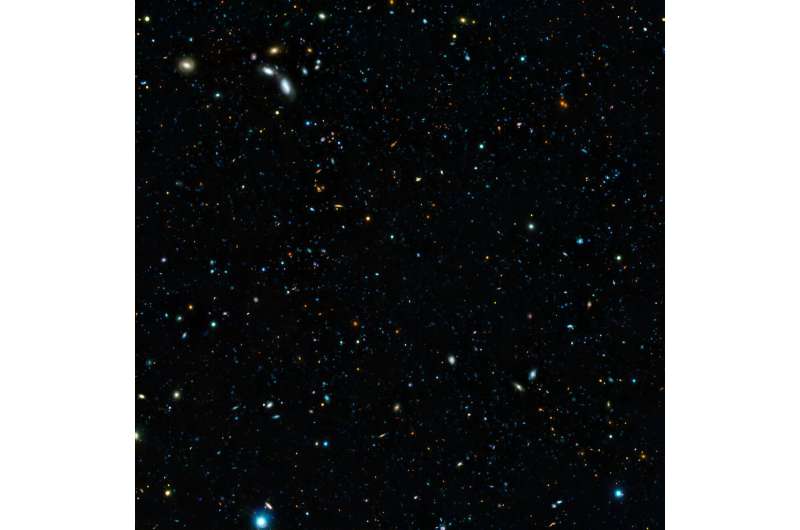This article has been reviewed according to Science X's editorial process and policies. Editors have highlighted the following attributes while ensuring the content's credibility:
fact-checked
trusted source
proofread
Telescopes didn't always play nicely with each other. That's about to change

Those readers who have dabbled with astronomical imaging will be familiar with the technique of taking multiple images and then stacking them together to improve the strength of the signal, yielding better images. Taking this technique further many research projects require data of the same object spanning longer time frames than a night's observing. This data is usually captured from different locations and under different conditions. The problem has been matching the observations across all these survey runs. Researchers have shared a new approach to calculate if separate images of the same object will yield additional signals or just generate useless noise.
Usually the images that are combined in astronomical images are taken with the same telescope so the instrumentation that captures the data and the conditions are identical. To date, using multiple telescopes from different locations to capture the data to form one image is an unusual, if not impractical approach.
A team of researchers from the John Hopkins Institute addressed the main problem of assessing images from sky surveys taken over many years from different telescope in different locations under different conditions. The challenge has been to match observations of the same objects and when the surveys are in close proximity this can be more challenging. Existing tools have been available to crossmatch data from various catalogs such as TopCat, CDS Match and Aspects but to date, these are sow and have had higher than wished for failure rates.
The team has developed a new data science approach known catchily as "mixed integer quadratically constrained programming" or MIQCP for short that centers around assigning a score to each pair of observations from different observing runs from different surveys. The assigned score measures the likelihood that the observations were of the same object and the score increases as the observations are closer and decreases if further apart.
Using their new technique they are able to take observations from different surveys and match objects to remove the task of sorting through all possible pairings. Not only does it speed up the matching process but it also allows for handling large sets of data. In tests, the results were very promising. Previous approaches were still fast but did not allow for all possible matches limiting likelihood of success, something vastly improved in this new technique.
The team emphasize that the surveys are key to understanding the many mechanisms across the universe, not only at the macro scale but also at the particle level. Their new technique opens up new opportunities for processing image data and the team is going to further enhance the method to handle larger datasets. Already the team can handle up to 100 catalogs, an improvement on the current 10 to 20 using existing methods.
Provided by Universe Today





















